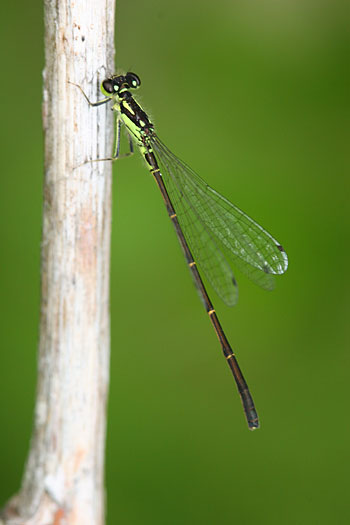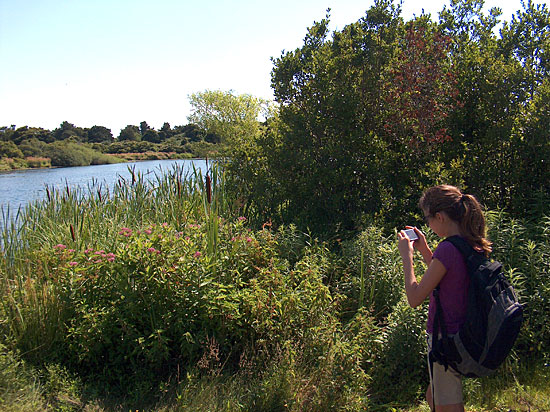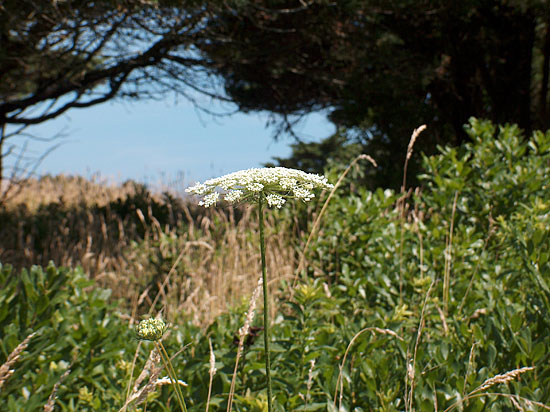Nantucket Biodiversity
by Dr. Sarah D. Oktay
Managing Director UMass Boston Nantucket Field Station
What is biodiversity and why should we care about it? Well, when one refers to biodiversity, he or she is speaking of the combination of all the biotic (living) things in an area and the habitat that allows those things to exist. The number of species of plants, animals, and microorganisms, the enormous diversity of genes in these species, the different ecosystems on the planet, such as deserts, rain forests, and coral reefs are all part of a biologically diverse Earth. Biodiversity can be defined as the number and variety of organisms found within a specified geographic region and this definition points to the actual counting and recording of things. Without simple enumeration of an object, gene, resource, or creature, we may never know what existed or be able to determine what is missing from an ecosystem. The difficulty in piecing together the fossilized remains of creatures existing when dinosaurs walked the earth reminds us that “keeping track” of things is in our DNA and should be on our minds. Recording the biodiversity of the planet gets more critical every year.
Biologists most often define "biological diversity" as the "totality of genes, species, and ecosystems of a region." This multilevel conception is consistent with the early use of the term "biological diversity" in the late 1960s through the 1970s. Raymond F. Dasmann first coined the term in his 1968 book “A Different Kind of Country” and Thomas E. Lovejoy introduced it to the wider conservation and science communities. The Stanford Encyclopedia of Philosophy website contains a thorough description of what biodiversity is and how the concept of biodiversity has developed over the past 15 years at http://plato.stanford.edu/entries/biodiversity. From this site we learn that the term "Biodiversity" was coined as a contraction of "biological diversity" in 1985. A symposium in 1986 and the follow-up book Biodiversity, edited by biologist E. O. Wilson and published in 1988, expanded the popularity of this concept.
The continued health of human societies depends upon a natural environment that is productive and contains a wide diversity of plant, animal, and microbe species. Life on the earth comprises at least 10 million species of plants, animals, and microbes, while in the United States there are an estimated 750,000 species, of which small organisms such as anthropods (arachnids such as spiders and mites, as well as crustaceans, millipedes, centipedes, and insects) and microbes comprise 95 percent. According to the international group, the Convention on Biological Diversity, “At least 40 percent of the world’s economy and 80 percent of the needs of the poor are derived from biological resources. In addition, the richer the diversity of life, the greater the opportunity for medical discoveries, economic development, and adaptive responses to such new challenges as climate change.” Every day, a species of plant or animal around the world disappears due to habitat destruction, direct harvesting of species, introduction of alien species, changes in rainfall or shade, or as a result of man-made pollutants in our streams, rivers, lakes, and atmosphere.
According to the Encyclopedia of Earth (http://www.eoearth.org/article/biodiversity, accessed Sept 3rd, 2010), “The IUCN (International Union for Conservation of Nature) Red List estimates that 12-52% of species within well-studied higher taxa such as vertebrates and vascular plants are threatened with extinction. Based on data on recorded extinctions of known species over the past century, scientists estimate that current rates of species extinction are about 100 times higher than long-term average rates based on fossil data. Other plausible estimates suggest that present extinction rates now may have reached 1000 to 10,000 times the average over past geologic time. These estimates are the basis of the consensus that the Earth is in the midst of the sixth mass extinction event in its history; the present extinction event is termed the Holocene Mass Extinction.” Well, holy wipeout, Batman! This is something we need to both monitor and try to figure out how to reduce or at least slow down. Here on Nantucket we have made some pretty big strides at protecting or maintaining biodiversity from active land management and monitoring of fragile sandplain grassland species to a very effective and concerted effort to maintain and enlarge wildlife corridors to a comprehensive and informed attempt to identify and eradicate invasive exotic plants.
Nantucket's physical isolation from the mainland allows for a wide range of genetic, biological, wetland and coastal science, and natural resource protection projects in a relatively closed system. For the past several years, island conservation groups and scientists have banded together to conduct their own research and fund outside research groups investigating our plants, lichens, mushrooms, birds, snakes, ants, spiders, beetles, and everything in between. Some of this research builds upon decades of biological observations and research. We are also interested in recording any detectable biodiversity shifts following hundreds of years of land alterations. The isolation and geologic history of Nantucket, Tuckernuck, and Muskeget Islands have created a cornucopia of distinctive flora and fauna that occupy niches near the geographical and climatological northern and southern limits of their ranges. Many of these species are rare regionally and even globally. In fact, there are more Massachusetts state-listed endangered species on Nantucket than in any other county in the state.
You may not know that this year (2010, hopefully you do remember what year it is) has been named by the United Nations the International Year of Biodiversity (IYB). I know, I have not gotten you anything; but there’s still time, and in fact, the island conservation, education, and science groups have gotten the island of Nantucket (and Tuckernuck and Muskeget) the best gift of all, an abiding interest in, and long-term financial and physical backing in the study of biodiversity here on our slice of Earth. You’ll be able to see that in action and participate in the fun September 15 to 21.
To formalize scientific collaboration and coordinate our goals, island scientific, educational, and conservation groups formed the Nantucket Biodiversity Initiative in 2003. The NBI is a partnership between conservation organizations, educational groups, state agencies and individuals engaged in documenting the biodiversity of the islands and adjacent waters in an attempt to understand, record, discover, monitor and most importantly conserve that biodiversity, now and for the future. The goals of the NBI are to inventory and monitor the many species of plants and animals found on Nantucket and to educate the public about the importance of protecting the rare elements that contribute to Nantucket’s rich biodiversity. Members of the NBI include: the Linda Loring Nature Foundation, Maria Mitchell Association, Massachusetts Audubon Society, Nantucket Conservation Foundation, Nantucket Garden Club, Nantucket Islands Land Bank Commission, Nantucket Land Council, Natural Heritage & Endangered Species Program of Massachusetts Division of Fisheries & Wildlife, Science Department of Nantucket High School, The Trustees of Reservations, the Tuckernuck Land Trust, and the University of Massachusetts Boston Nantucket Field Station.
NBI members have selected 21 specific plots in 21 different habitats in order to coordinate the research conducted and assist scientists in the field that might not be familiar with Nantucket. These plots also allow us to record plant and animal life in the same area over time to document any changes. Each of these ten hectare (10,000 square meters or about 2.5 U.S. survey acres) plots is representative of a different habitat on Nantucket from salt marshes to sandplain grasslands to scrub oak forest and heathlands. We ask visiting scientist to perform as much of the research as possible within these plots so that we can maintain a long term database of biodiversity-related changes. These types of measurements are essential for recording, for instance, how global climate change could be affecting the island’s plant and animal species.
 Photo by Cheryl Comeau-Beaton Photo by Cheryl Comeau-Beaton |
Every other year, we feature a Nantucket Biodiversity Week where scientists fan out over the island with citizen scientists and naturalists to count, record, photograph, measure, or observe a variety of life. We held our first Nantucket Biodiversity Week in May of 2004. This year, we have an amazing series of world class lectures and field trips that allow you to be in the action, mucking about with the biologists, naturalists, and other scientists almost like a National Geographic week on island. The kick-off event on Wednesday night, September 15 at 7 p.m. at the Unitarian Universalist Church (11 Orange Street) is the keynote address: “Bringing Nature Home: Biodiversity in Your Backyard,” by renowned author and educator, Dr. Douglas Tallamy, who is a Professor and Chair of the Department of Entomology and Wildlife Ecology at the University of Delaware. Dr. Tallamy is the author of the book Bringing Nature Home: How Native Plants Sustain Wildlife in Our Gardens. His book has made a huge impact around the country by encouraging backyard gardeners not to despair, but to instead plant for the environment to provide habitat for native creatures. Native wildflower costumes are optional, but appreciated. On Friday night, Dr. Peter Alden will be giving a talk entitled “An Update on the Alien Plant Crisis in Massachusetts” at 7 pm in the Great Hall inside the Nantucket Atheneum on 1 India Street. Peter Alden is the author of 15 bird, mammal and eco-travel books. Both of these authors will have copies of their books available.

Starting September 16 and running through the 21, there will be field trips and excursions to record butterflies and moths, band birds, identify salt marsh grasses, search for reptiles and amphibians, and learn about vernal ponds with the folks who literally wrote the book on the subject for Massachusetts (http://www.vernalpool.org/fldgide.htm). We’ll be treated to trips by scientists who have been documenting the biodiversity of the island for many years. Whether you are into ants, bees, wildflowers (extremely dangerous!), snakes, gray seals, invasive plants, moths, butterflies, or birds, there is something for you and for people of all ages. Special classes will be conducted throughout the week for our area kids and children are welcome on all the walks and talks. Sunday morning there will be a invasive plant walk in ‘Sconset from 9:30-11:30 led by the NBI’s Invasive Plant Species Committee along with Dr. Alden, and Sunday afternoon features a special botanical trip with botanist Pam Polloni and Ann Buckley to Coatue. This week-long event is one of the opportunities that make living on Nantucket special. This year, we decided to take advantage of the diversity in amazing photographers on island by staring our first ever photography contest.

Photographs can be of Nantucket plants, wildlife, landscape, marine life, etc. and should be submitted by September 17. All photographs will be displayed at the closing reception on September 20 from 5:30-7:00 pm at the Nantucket Conservation Foundation (118 Cliff Road). Prizes for categories and age groups will be awarded at the reception. Entries and questions should be directed to Dr. Jennifer Karberg, Research Supervisor at the Nantucket Conservation Foundation by emailing jkarberg@nantucketconservation.org or calling 508-228-2884.
The entire schedule for the week can be found at www.nantucketbiodiversityinitiative.org and information is available on the walks and dinners and lectures by calling 508-228-0898. I think you will be really surprised at the amount of science that occurs on island conducted by many of our conservation and research organizations. The week’s walks, field trips and lectures are all free with a small charge for some of the dinners. Donations are accepted and thanks are due to the retail establishments in our community that are donating food, drinks, or other items. Please check the NBI website for an updated list of our sponsors. We hope to see you there!